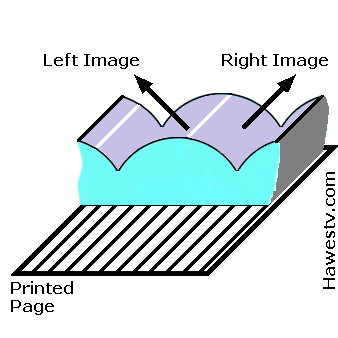Fake History
The Real Telechrome
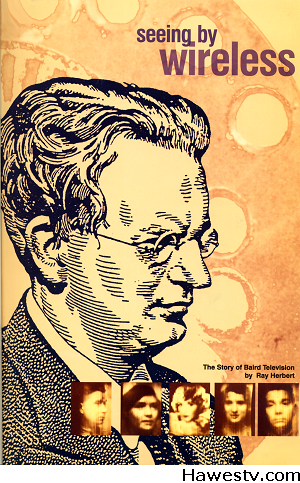
Ray Herbert's book about Baird (above) |
Telechrome was an early picture tube for color television. This tube could reproduce video in two primary colors. To promote the tube, the inventor J.L. Baird displayed 3D pictures on it. When the tube operated in 3D mode, the viewer had to wear anaglyph glasses. (1., 2.) • Ray Herbert, a long-time Baird engineer, described Telechrome 3D. Herbert's book includes testimony from E.G.O. Anderson, who assisted Baird during the Telechrome years. (3.) Here are Herbert's words... “The blue-green and orange-red images formed a stereoscopic pair and were viewed through color spectacles.” (4.) |
||
|
• Electronics Magazine (1944) echoed Mr. Herbert... “The blue-green and orange-red images form a stereoscopic pair when viewed through colored glasses.” (5.) • Popular Mechanics Magazine (1945) offered its support... “For stereoscopic viewing, colored glasses can be used.” (6.) • Wireless World Magazine (1944) corroborated the other sources... | |||
“...viewing the resultant displaced images through spectacles with the corresponding colour filters for the left and right eye, excellent stereoscopic depth of vision is obtained.” (7.) |

Anaglyph glasses |
|
Not lenticular. None of the above sources describes a “lenticular Telechrome” for autostereographic (no glasses) 3D. |
|
|
Three-color tube. Baird also patented, but probably never built a three-color version of Telechrome. (8.) Please refer to the Telechrome patent drawings (right). Figure 1 depicts the two-color (red and cyan) Telechrome. Figure 2 is for the three-color Telechrome. The three-color tube would have had a flat, red target: Similar to the one in the two-color tube.(9.) But the second target would have had two color guns firing at it: A green and a blue gun (#11 and #6). Working together, the green and blue guns would now create the blue-green (cyan) image. The target would be a zigzag panel of material, typically mica (#8). The zigzag piece would be a series of 45-degree “sawteeth.” The green gun was to fire at the top angles of this target (#10). The blue gun was to fire at the bottom angles of this target (#9). The zigzag panel would be angular, not rounded on top like a lenticular lens. (10.) 
Lenticular lens profile, top. Notice curved (convex) surfaces of lenses: Unlike pointed surfaces of Telechrome targets (bottom). |

|
Wikipedia's Article on “Telechrome”The Telechrome tube is the subject of a Wikipedia article. This article is a mishmash of both genuine and counterfeit facts. From the article (11.) below are several false allegations about “lenticular Telechrome,” with our comments... |
A. No Patent Claim for “Lenticular Telechrome”
• What's Wrong: Specious. The patents don’t claim “lenticular Telechrome.” Suppose that lenticular means were really part of the invention. Then wouldn't Baird claim lenticular means in his Telechrome patents? |
|
|
He didn't. (The patents also fail to claim autostereography, by any means. Autostereography is a 3D effect that doesn't require glasses.) (12., 13.) |

|
|
Below is an excerpt from Baird's patent 562,168, Claim 1. This claim specifies how the Telechrome screens were to operate... “...the screen surfaces being so positioned that the images on each are superimposed when directly viewed by an observer.” (14.) |
|
|
No mention of “lenticular lenses splitting the view into two, aerial images.” That behavior is what alleged “lenticular Telechrome” would require. But Baird's Telechrome patent calls for no such behavior. In fact, Baird declares the opposite: The images do what? The images superimpose on the screen as the viewer watches them. (15.) |

Arrrgh! No lenticular anything! The images superimpose! |
B. Sources Fail to Support “Lenticular Telechrome”Wikipedia: “In this case, the tube was rotated so the peaks ran vertically instead of horizontally and the red gun was removed. The guns formerly used for green and blue were now used for left and right images. (16.)” • What's Wrong: Irrelevant source. The source for the fanciful assertion above is an article in Wireless World. The alleged process of eliminating the red gun and rotating the tube is missing from this source. In fact, the reference doesn't even mention alleged “lenticular Telechrome.” |
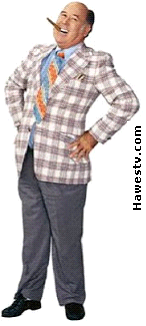
False premise, Professor! |
Wikipedia: “The basic concept is identical to the lenticular printing system used in magazines and other printed materials to produce 3D images. (17.)” |

Prove it! |
|
• What's Wrong: Missing Proof. The citation for this Wikipedia quotation is a Popular Mechanics article. Yet Popular Mechanics never compares Telechrome 3D to lenticular printing. In fact, the term “lenticular” doesn't appear in the Popular Mechanics article. The story never compares magazine printing (“lenticular” or otherwise) to Telechrome: Or to television of any type. (18.) | |
C. No “Lenticular Telechrome” Trials or Artifacts
Wikipedia: “However, there is no evidence such a system was ever trialled.” • Almost right: The lack of a trial is only the beginning. Wikipedia's sources fail to mention a public demonstration of the alleged “lenticular Telechrome.” So the public wasn't aware of it. |
|
|
Today, no museum has a “lenticular Telechrome” tube. The National Science & Media Museum in Bradford, UK owns the only surviving Telechrome tube. This tube has no “lenticular target.” Instead, the target is a flat plate with two sides. (19.) |
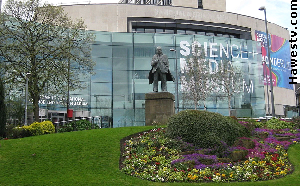
Science & Media Museum |
Incidental Points
“Lenticular Telechrome” is SchmegeggeRotate the tube by 90 degrees? How amusing! This ludicrous instruction sounds every bit the prank that it is: “To see pictures in 3D, Mrs. Pigeon, simply turn your set on its side! Please ignore any sounds of breaking glass. By the way, do you have Prince Albert in a can?” |
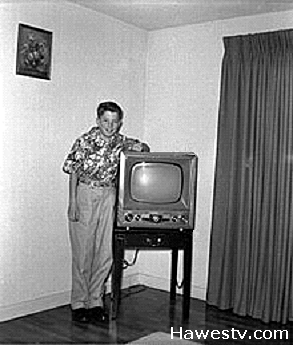
|
|
Don that tinfoil hat. “Flip-TV” 3D occupies the realm of bigfoot, Area 51, and the zombie apocalypse. But here's the big secret: Shhh! Flipping a TV sideways doesn't really make it 3D. Instead, flipping a TV sideways brings in a sideways picture. There's far more to 3D than which way the receiver sits on the table. |
 Len-TIN-cular
Len-TIN-cular
|
|
|
“Flip-TV” broadcasting is really a poor man’s vertical scanning. Of course, vertical scanning was incompatible with the British TV system of the 1940s. And with Baird's 1940s Telechrome system. We know that, because of Baird's promise that pre-war British TV sets could reproduce Telechrome pictures: Only in black and white, of course. (20.) And those pre-war sets used horizontal scanning. So horizontal scanning was a requirement. And vertical scanning was incompatible with Telechrome. British patent 545,078 describes Baird's compatible scanning system. (21.) |
||
|
In fact, to make “flip-TV” lenticular broadcasts, the TV studio would have to flip all cameras, studio monitors, and telecine scanners. Besides that, the studio would need at least two sideways cameras to make a stereo picture. (BBC didn't have stereoscopic cameras.) In a word, alleged “lenticular Telechrome” is schmegegge! |
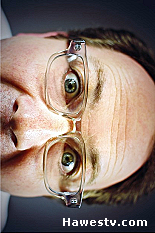 3D-mentia
3D-mentia
| |
|
Hankey Television Committee. Did Baird really consider vertical scanning to be a valuable improvement to television? If so, he would have proposed it to the Hankey Television Committee in 1943. But he didn't. Baird's proposal also fails to bring up alleged “lenticular Telechrome.” (22.) |
||
Weasel Words
|

Weasel words can bite. |
|
• What's Wrong: Weasel words are evasive. The “Wikipedia-1” quote above is a passive-voice sentence. Passive voice is irresponsible. It allows a lazy author to avoid stating the subject. Who never submitted alleged “lenticular Telechrome” to a trial? Cable and Wireless? E.G.O. Anderson? Baird himself? Where are the facts? And while we're at it, a “trial” of what sort? Now on to another egregious example of weasel words. Wikipedia-2 doesn't define what it means by “the basic concept” or “identical.” Actually, there are many differences between lenticular 3D printing and alleged “lenticular Telechrome.” The table below details some differences. (23., 24.) |
|
| Detail | Lenticular Printing | Telechrome |
| Effect of Imaging System | Divergence; Acts as “⅄” fork: One image enters fork. Two emerge. | Convergence; acts as “Y” fork: Two images enter fork. One emerges. |
| Imaging System | Lenticular, (semi-cylinder) lenses | Rooftop-shaped; coating of radiant, color phosphors |
| Light type | Reflective | Transmissive |
| Interlaced Images | Two, printed: 4-color; cyan, magenta, yellow, & black | Two, on video targets: Green & blue |
| Operation Details | Image pickup from beneath flat face. Convex (top) face splits image into left and right views. | Pixel pickup from 2-45° faces. Target merges green & blue images. One cyan image leaves front, flat face (red target). |
| Light ray path after imaging system | Outward, left & right: Each eye sees unique image. | Inward: Both eyes see same image. |
|
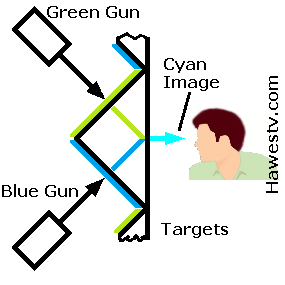
|
|
|
Something smells fishy. Wikipedia should back up its assertions with valid citations. Otherwise, what smells like fringe science is fringe science. |
||
Conclusion: Lenticular (Not)In summary, this page made these points...
|

Horsefeathers |
Keeping Score. Let's see: Alleged “lenticular Telechrome” is absent from the Baird patents, demonstrations, press reports, and museums. The public has never seen it. References don't support its existence. Then “lenticular Telechrome” is horsefeathers, not history. And “lenticular Telechrome” doesn't belong on a respectable site such as Wikipedia. |
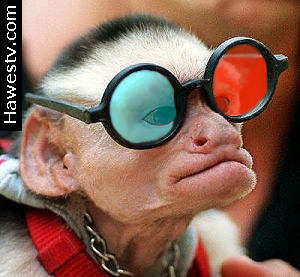
Baboon-zle |
Respect for Baird's heritage. J.L. Baird's remarkable record speaks for itself. It need not depend on deceit. Instead of honoring Baird, unsourced assertions cast doubt on his reputation. Fake history discredits him. Cry wolf, and soon nobody believes you. Users depend on Wikipedia to help them with their research. If they find that Wikipedia is defrauding them, they'll walk away. |
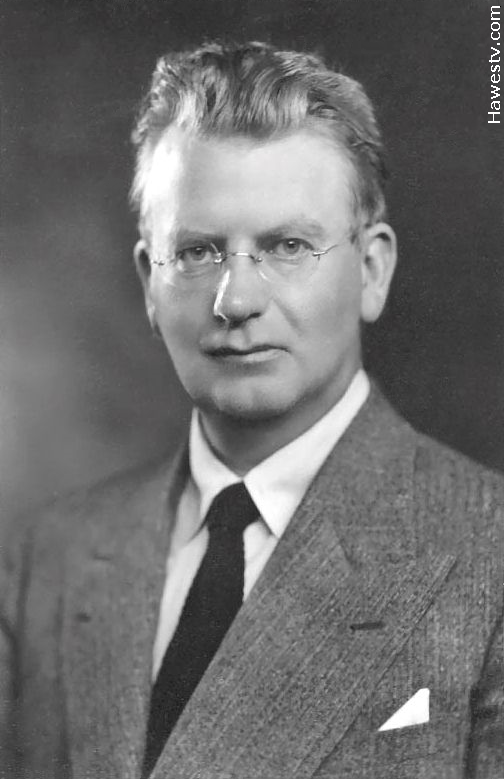
|
A prince can make a belted knight,
|
| • NOTICE: If you're a Wikipedian, maybe you would consider expunging the paragraph about alleged “lenticular Telechrome.” Thank you! |
Visit these related pages... |
|||||
|
|
|
||||
CONTENTS
- Fake History
- The Real Telechrome
- Wikipedia's Article on “Telechrome”
- A. No Patent Claim for “Lenticular Telechrome”
- B. Sources Fail to Support “Lenticular Telechrome”
- C. No Trials & No Artifacts
- Incidental Points
- “Lenticular Telechrome” is Schmegegge
- Weasel Words
- Questions
- Conclusion: Lenticular (Not)
- Postscript by Robert Burns
- References
- Visit these related pages
PHOTOS & DRAWINGS
- Red/Cyan Glasses Were Necessary*
- Herbert Book Cover
- Anaglyph Glasses*
- Telechrome Patent Drawings
- Lenticular Lens vs. Telechrome Target*
- Patent, (Art Treatment)*
- The Images Superimpose!*
- False Premise*
- Critical woman*
- Science and Media Museum*
- Hoax: Flip Your TV Sideways!*
- Len-TIN-Cular*
- 3D-Mentia*
- Weasel Words Can Bite*
- Lenticular Lens, Upright vs. Sideways*
- Telechrome Tube, Upright vs. Sideways*
- Horsefeathers*
- Baboon-zle*
- Baird color portrait (Exclusive!)
- Crest of Scotland* (*Creative commons license)

